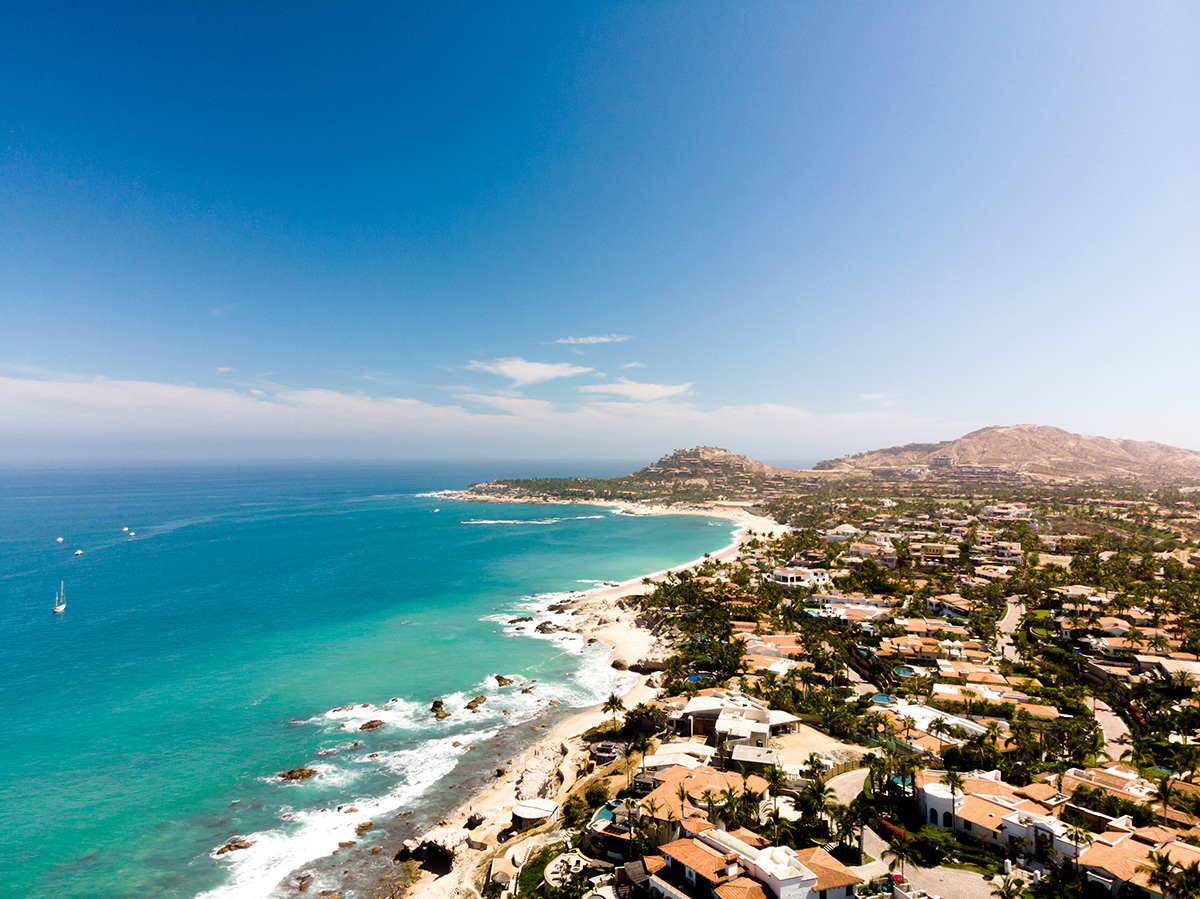Baja 101
Jacques Cousteau described the Sea of Cortez as “the aquarium of the world.” It is said that eons ago, back when the Earth and Continents were still taking their shape, the edge of Mexico split from the mainland to form the Gulf of California and the Baja Peninsula.
This allowed the Pacific Ocean to rush into the gap and create the Sea of Cortez, or as some call it, Mother Nature’s own fish trap. Hundreds of varieties of fish and mammals found their way into this “trap” and either stayed in the warm shallow waters or ventured down into the cool two mile-deep San Andreas Fault. For millenniums, the Colorado River has been dragging its rich minerals and nutrients into the Sea of Cortez, aiding the living species to thrive in these waters.
In Southern Baja, however, it’s not just about the ocean. In this naturally magical place the mountains meet the desert and the desert meets the ocean. The Sierra de la Laguna is a mountain range that lies at the southern end of the peninsula, where at above 800 meters in elevation dry forests transition to pine-oak forests and you can find wild mushrooms, wild horses and even deer.
- The Baja Peninsula includes two different states: Baja California Norte and Baja California Sur. The Los Cabos municipality is in Baja California Sur and it encompasses the southernmost tip of the peninsula, from Todos Santos, Cabo San Lucas, San José del Cabo, to the East Cape area.
- La Paz is the State Capital.
- If you take a look at the Baja Sur map you can see that the highways and towns form a loop, which makes for an ideal road trip.
- The Pacific Ocean and the Sea of Cortez meet at the very tip of the peninsula. On the Pacific side the waves are much larger and more powerful than on the Sea of Cortez, the beaches and the sand are different and it’s usually a few degrees cooler, which is very pleasant during the warm summer months.
- Los Cabos means “the capes” in Spanish.
Destinations
Each town or city in Baja California Sur is different and unique. Road trips in Baja are part of the culture and are very easy to do for someone that is just visiting. Below is a brief description of some of the main areas and destinations to visit, but there is much more to see!

Cabo San Lucas
This tourist friendly town, also just known as “Cabo,” is located on the tip of the Baja California peninsula and is full of entertainment for every age and liking.
The Sea of Cortez and the Pacific Ocean meet at Land’s End, where you can observe the beautiful rock formations and the famous Cabo Arch.
In Cabo San Lucas you can find Medano Beach (the liveliest beach in the Los Cabos area), an impressive marina and countless restaurants and bars that keep the town alive day and night.
The Corridor
The corridor is the 40 KM highway that connects Cabo San Lucas and San José del Cabo (about a 20 minute drive). Along this road you can find various hotels, luxury ocean front homes, championship golf courses and beautiful views.
Have your camera ready and make a roadside stop at the Costa Azul view-point for photo opportunities and a refreshing coco frío (cold coconut).


San José del Cabo
Walking around downtown San José will allow you to experience a traditional Mexican town. You will find yourself surrounded by colorful buildings and quaint cobblestone streets that lead to the town’s picturesque zócalo (main plaza).
Over the years, San José has become an artistic and cultural center with numerous fine art galleries in its downtown art district, as well as world-class restaurants. San José has a beautiful beach where you can take a horseback ride to explore the estuary that is home to many different bird species.
Todos Santos
Located on the Pacific Ocean side of the peninsula, Todos Santos is an oasis where artists and surfers flock to enjoy the culture and excellent surf.
Home to the famous Hotel California, this charming town offers great restaurants and a cooler climate than Cabo San Lucas and San José due to the breezes coming from the Pacific Ocean.


La Paz
La Paz is the capital of the State of Baja California Sur and is known for its warm people and pristine beaches. This authentic Mexican city (as well as the general southern Baja region) has been rated as one of the safest in Mexico and still maintains the small town feel that is very welcoming for tourists. La Paz is a departure point for tours and charters to the stunning Espiritu Santo Island as well as whale watching excursions.
Stroll down the colorful malecón (boardwalk), walk hundreds of feet into waist-highwater at Balandra Beach, or enjoy a fine dining experience; La Paz has a lot to offer!
Loreto
Loreto offers the best of both worlds for tourists who long to escape to an ‘authentic-Mexico’ town with settings that take you back-in-time along with ocean activities that rival that of any other modern coastal city.
In Loreto you’ll find historic buildings such as the enchanting Mision de Loreto – a mission-style church that was built in 1697, as well as The Islands of Loreto which boasts Mexico’s largest marine preserve where dolphins, seals, turtles and sea lions all play in the sea. For those who are partial to adventures on land; there is hiking, biking, and nature-tours to fill up a camera with pictures of radiant natural settings.


East Cape
People often call it “old Cabo” because of its pristine beaches and small fishing towns such as Buena Vista and Los Barriles. The East Cape begins just east of San José and extends about 100 miles up the Sea of Cortez coast. Sixty miles outside of San José is the Cabo Pulmo National Marine Park, a Nationally Protected coral reef that offers outstanding snorkeling and scuba diving.
Very popular for fishing and surfing, the East Cape also attracts kite surfers, campers and those who just want to get away from it all.
[instagram-feed feed=1]


